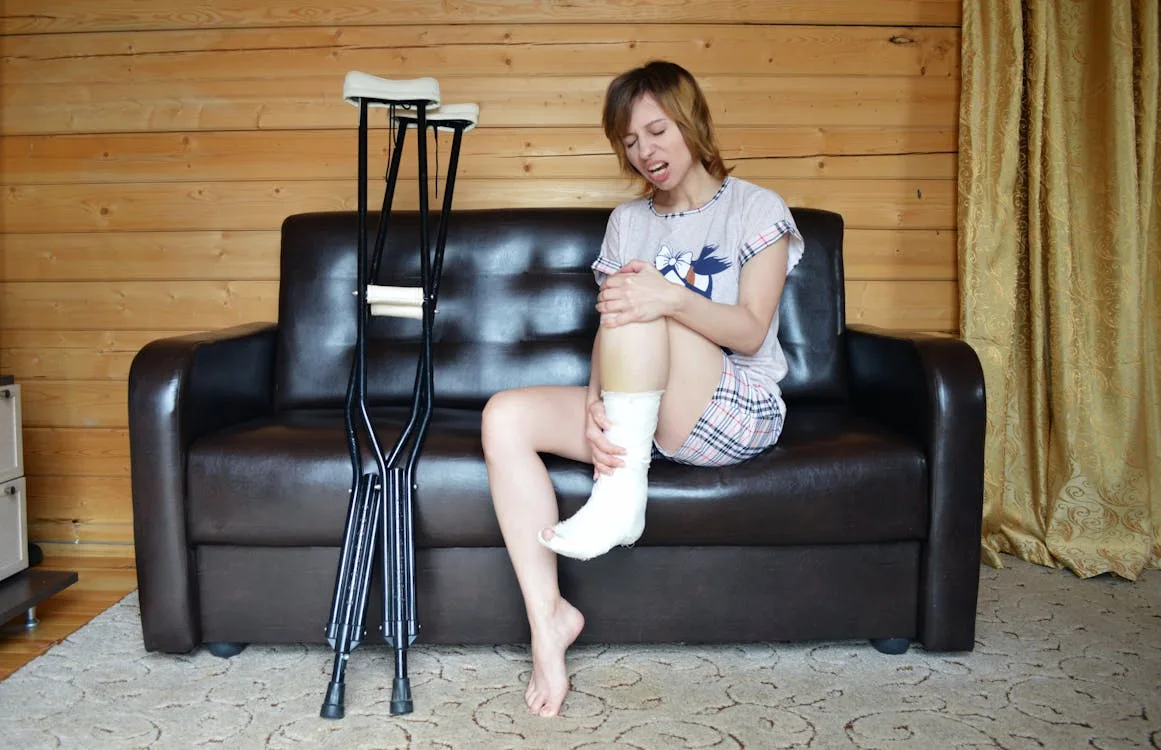Our bones are very tough. In fact, they’re about as strong as steel (but about three times lighter).
Despite human bones being so tough, many of us will break a bone in our lifetime. In fact, as much as 1 in 2 women break a bone throughout their lifetime, while 1 in 4 men are also likely to break a bone.
There are 206 bones in the human body and you can break any one of them. However, certain bones have a higher chance of being broken than others. This post delves into some of the most commonly broken bones and how to recover.
The 5 most commonly broken bones
5. Tibia/fibula
Ankle fractures are the fifth most common broken bone. There are two main bones in the ankle that are most vulnerable: the tibia and the fibula. These two bones run through the lower leg from the knee to the foot. The biggest of these bones is the tibia (shin bone). The fibula is slimmer and runs through the calf.
Many people have had to hire a motorcycle accident lawyer for a tibia or fibula fracture – they are the two bones that are most commonly fractured during a motorcycle accident. However, there are many other causes of these fractures too including falling from a significant height or even twisting one’s ankle while running.
Fibula fractures usually take several weeks to heal, while tibia fractures can take several months. Leg casts, braces and surgery can be required to heal these bones (when you see people in crutches with a cast, these bones are often the culprit). It’s essential to rest your leg and not put any weight on it until these bones heal. Certain exercises can help you regain strength after.
4. Femur
The femur (thighbone) is the longest and heaviest bone in the body. It’s also the strongest bone. But despite its strength, it’s also the fourth most commonly fractured bone in the body.
Why are so many people breaking their femur, despite it being the strongest bone? Well, it turns out most people who break their femur are over 65 years old and have osteoporosis. This disease results in weakened bones. Combined with mobility issues and a higher risk of falls, this leads to many elderly people falling and breaking their femur. The majority of these breaks occur near the hip and referred to as ‘hip fractures’.
The femur takes a long time to heal – often 3 to 6 months. Surgery and sometimes a hip replacement can be needed for these breaks. Those who don’t rest and take the time to recover can often end up with permanent mobility issues. More so than many other broken bones, it’s important to take this fracture seriously if you want any chance of it healing.
3. Radius/ulna
The radius and ulna are two bones located in the forearm. When people have a ‘broken wrist’, it’s usually one of these two bones that is fractured.
Radius and ulna fractures are almost always caused by falls. It’s natural instinct to put out our hand when we fall – but when we fall with too much force, this can cause the wrist bones to take the impact. Broken wrists are commonly experienced by those doing snow sports like snowboarding or skiing. Many people also break their wrist while skateboarding or rollerblading.
A cast or wrist splint is typically required to help these bones heal. It is recommended that you keep your hand raised above your heart as much as possible to reduce swelling and pain. Recovery time is usually 6 to 12 weeks.
2. Humerus
There’s nothing humorous about breaking your humerus. This bone is found in the upper arm. When you bang your ‘funny bone’ it is usually pain from the ulnar nerve running up the humerus that you are experiencing. As you can imagine, breaking this bone can be quite painful.
The humerus is the most commonly broken bone in children. As with wrist fractures, humerus fractures are often caused by falls – particularly falling down stairs or falling directly on the elbow. Car accidents can also be a common cause.
To heal your humerus, you’ll need to put your arm in a sling and not move your shoulder. You can expect it to take 6 to 12 weeks for this bone to heal.
1. Clavicle
Better known as the ‘collarbone’, the clavicle joins the breastbone and the shoulder blade. Most people are able to feel it because it protrudes more than many other bones. And because it protrudes, this makes it vulnerable to fractures – so vulnerable that it is in fact the most commonly broken bone in the human body.
Broken collarbones can have many causes, but in all cases it’s the result of a direct blow to the shoulder. This could be the result of being hit on the shoulder, or as a result of falling on one’s arm heavily. Road accidents are a common cause of clavicle fractures. These injuries are also commonly sustained while playing sports.
What are some other commonly broken bones?
Most breaks affect the arms and legs. The feet and hands are particularly vulnerable because they are constantly moving and are exposed to all kinds of dangers. There are 27 bones in the hand, and 26 bones in the foot – the fifth metacarpal (the bone connecting the little finger) and fifth metatarsal bone (the bone connecting the little toe) each being the most commonly fractured.
Other bones are less likely to be broken, however can still be common in certain situations. For example, broken ribs and pelvis fractures don’t happen too frequently, but are a common fracture experienced during car accidents.
Exercising safety in your day to day life can help reduce the risk of experiencing a fracture. Playing sports and car accidents are the most common ways in which people break bones – by training safely and driving carefully you can help reduce the risk of being injured during these activities. If you are older and have osteoporosis – it is important to take prescription medication and take preventative action against falls.






